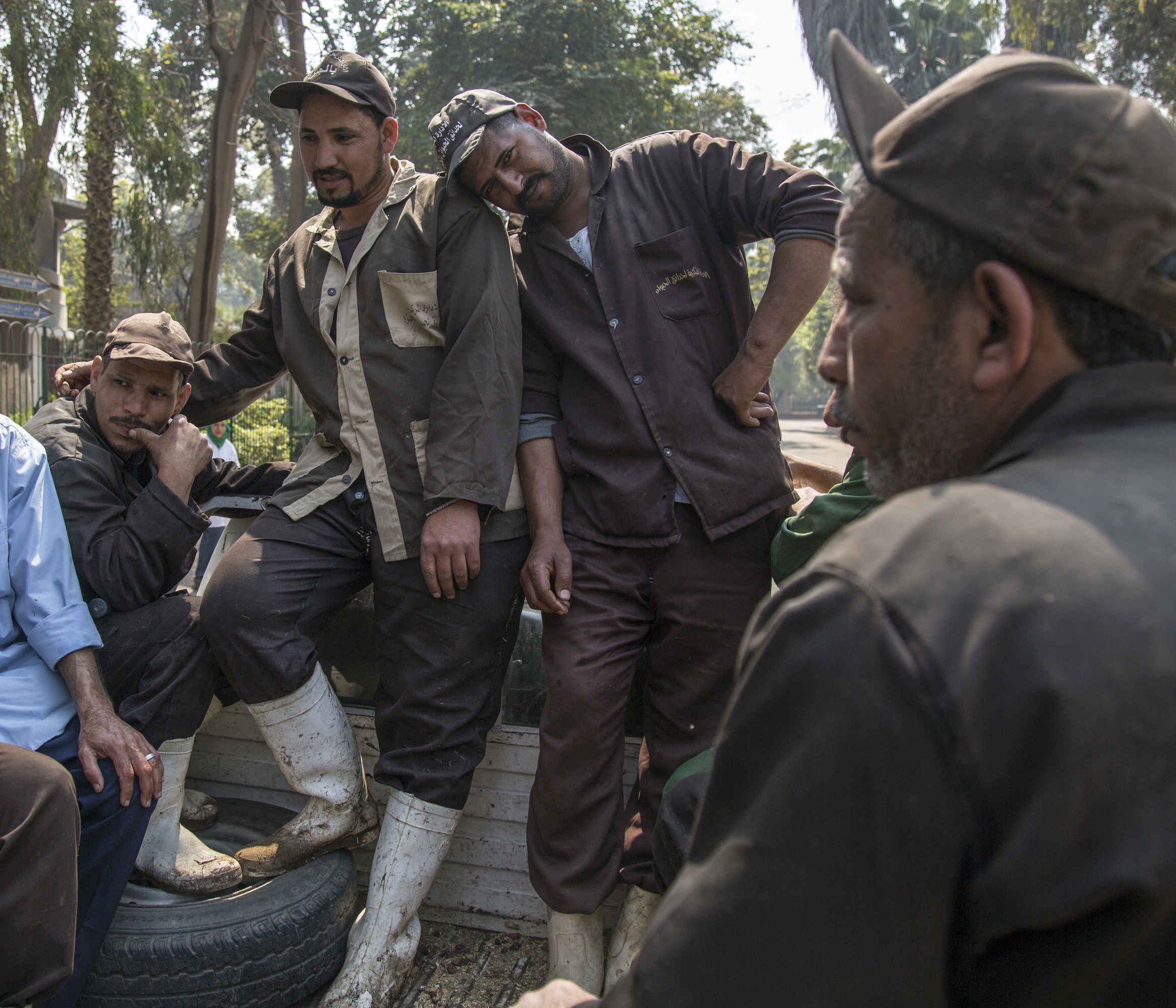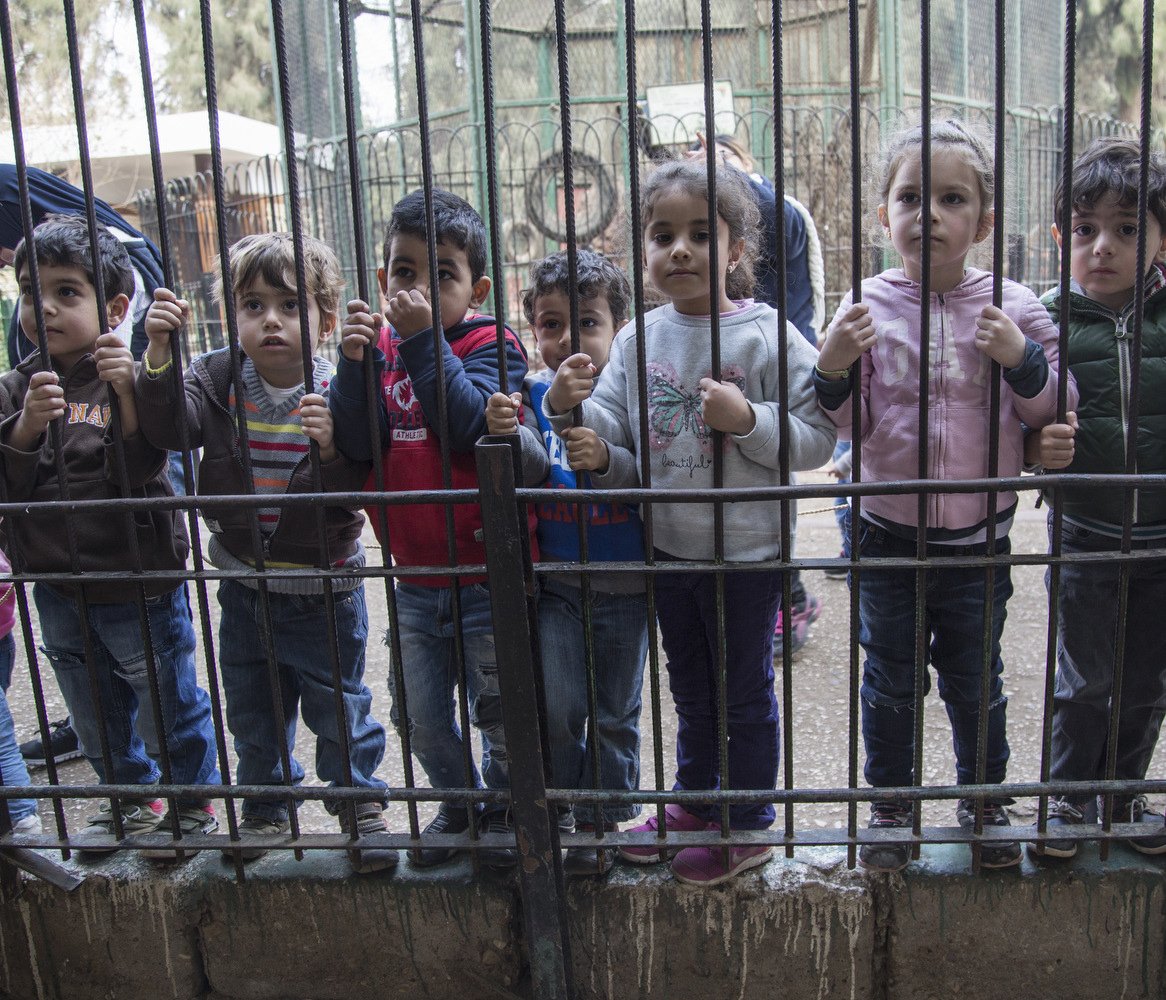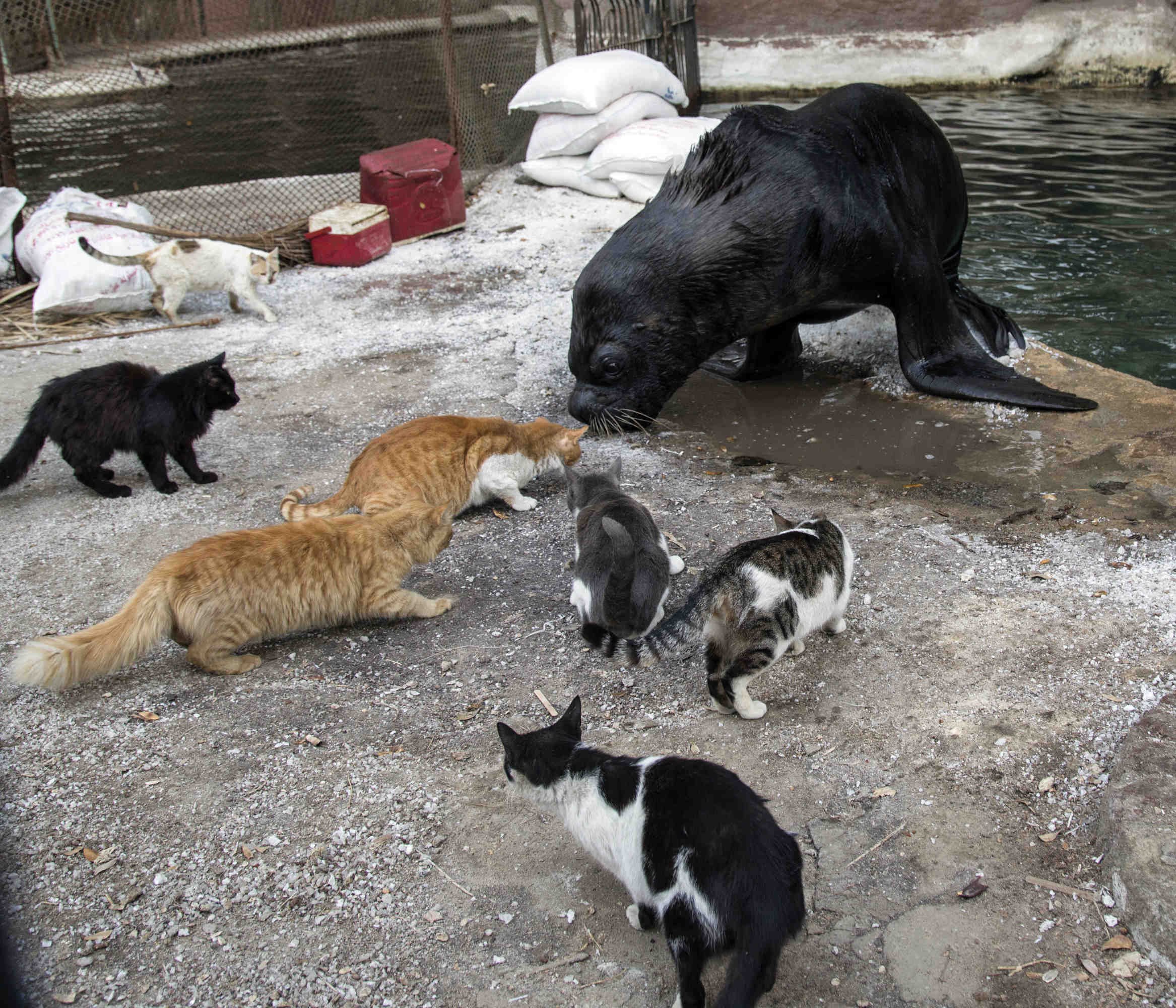
The Giza Zoo in Egypt is one of the biggest and oldest in Africa, opened in 1891. It was originally built with the same standards as the London Zoo.
For many Egyptians, it is one of the best amusement parks, especially for children, where it’s the only opportunity to be introduced to animal lives and the biggest green area in the heart of Cairo.
In this story, I try to discover this relationship between the animals and the keepers, who mostly spent between 10 to 35 years with these animals in this job.
Having the animals in captivity is torture because of keeping them away from their nature. Still, you always hear rumours about torturing the animals by the keepers. One scene that led me to embark on shooting the story was when I was on an official visit to interview the head of the zoo. While waiting and wandering the zoo, I saw Abd El-Aziz from far feeding the elephant, showering and talking to it, I approached him and he started telling me about his story with the zoo, which lasted for over 25 years.
Most of the keepers are farmers coming from villages near Cairo. They commute every day from their villages to start at 6 am, to finish at 5 pm, they didn’t receive training to deal with the animals, a lot of them inherit the job from their father or relatives and gradually they developed and learnt how to deal with the animals.
In this story, I’m not trying to find excuses for the idea of the zoo and keeping the animals in captivity and bad conditions, I’m instead trying to go behind the scenes to shed light on the lives and relationship between the animals and the keepers, Both in captivity and have no decisions to make but being friends.
I spent more than a year trying to get permission and the trust of the keepers to open up and tell me their stories. In one of the mornings, while talking to one of the Vets in the Zoo, Wahid one of the keepers was running toward us with tears in his eyes, asking the vet to run with him to the monkey's cage because 2 donkeys were fighting, and one got badly hurt.
“ How these relationships can last and develop if it’s not built on love and mercy that brings us together as friends,” says Wahid one of the keepers after and asking him whether they torture the animals in order to tame them as we always hear.
Relationships in Captivity
2016 - 2017






Muhammed Abdel Aziz
Muhammed, in the middle, was busy rubbing the elephants with a white liquid. I approached him and inquired about what he was doing, to my question, he replied: “I have to rub their bodies with glycerin to moisturize their skin and keep them warm” Muhammad has been working at the zoo for 25 years, about his work he noted: “This is a lifetime companionship, these animals are my life, I think I should not say they are dearer to me than my children, maybe they are just as precious to my heart.” “Na’eema, come here, girl!” He called the only female elephant in the zoo, which is 27 years old, with an arm commanding tone.
Hamdy Hasaballah
“I am here in service of the animals,” said Hamdy, who spent the last 22 years working at the zoo, he added “I tried to apply for jobs in other fields, but it never happened; this made me realize that being a caretaker at the zoo is my destiny. I feel committed to them as my children.” For long hours, daily, Hamdy sits by the Lama and the Rhino’s houses doing his job. “the Rhino is sad because he is alone without a mate. Whatever we do for him, he lays down as you see now because he needs a companion, but it is difficult to bring a female Rhino at the moment because they are rare animals.”
The Rhino passed away in 2019, and the zoo mummified it.
Muhammad Fathy
“It is all about your attitude with the animal, whether you’re providing food, water, or care. they are locked up in cages. Imagine a person dear to you behind the bars, wouldn’t you feel sorry when you visit them?” with these words, Fathy summarized his relationship with the Greater Kudu, the Kangaroos and Gazelles, a 17-year companionship. He pointed out to the cage and continued: “God made these animals depend on us; we are responsible for them as long as they are in captivity, we should treat them well and preserve their well being.” “No one could go near this greater Kudu in the past” Fathy continued to explain the unique connection between himself and the animal: “if any visitor bothers the Kudu I never let it go, imagine what you could feel if someone is bothering you at your own house!”






Nady Abdel Haleem
Nady 21 years is the time Nady spent working at the zoo, during which he was responsible for many animals. “Once I am here in the morning, I first check on the giraffes, then I sit with my colleagues to have our morning tea before each starts his work duties.” Until today, Nady never forgets the “Massacre of the Birds” during the Avian Flu outbreak, when the administration decided to kill the birds in fear of the virus. “I told them I can’t kill an animal with my hands. I mean, I am 55 years old, I know it is allowed by God’s grace for us to consume sheep and cattle. Yet, I cannot slaughter any animals myself; not out of fear, it is out of love.” On the positive side, the giraffe is expecting a new- born calf in few weeks.
Mahmoud El-Afndi
“Did you know that a hippo killed the famous Pharaoh King Menes of the First Ancient Egyptian Dynasty; although hippos are herbivorous in general, they are brutal and they kill humans too!” El-Afndi has been working at the zoo for about 24 years; he spent only eight of them with the hippos. He does not fear going near them, as the trust between them is mutual, however, as he noted, “Caution is still necessary at all times.”
Saeed Kamel
Saeed Gently. This is how Saeed Kamel moves among the animals. His graceful attitude did not fade away during his 26-year journey of working at the zoo. “I stay all night long beside my children when they get sick. Animals are big babies, too; they can’t tell you what is hurting them... I remember once the vet was stitching one of the animals, I cried because it was painful for it, and I cry whenever I remember that day because I sympathize with its pain.” After only two days, I left the job, but the zoo director called and asked me to keep the job.
Ahmed Kaseb
Kaseb spent 20 years of his life working with lions, he is the lion’s caretaker. “It is the most dangerous job at the zoo; it is only for those who have a brave heart.” Said Kaseb. He tells me about Metwally, the most famous lion at the Giza zoo: “He is the oldest lion here and the closest to my heart. He needs special care at this age; that is why I chop the meat into little pieces to make it easier for him to eat.” “Just like elderly people, animals -and in particular those in captivity- need special care when they get old,” Kaseb added. Kaseb, who cultivated his knowledge about lions through personal experience in handling them, explained: “ the natural life span of a lion is about a maximum of 15 years in the wild, but Metwally is turning 24 soon. All animals could live longer in captivity due to adequate veterinary care and food supply.”

Waheed Abu Manea
Waheed spent more than 30 years with the monkeys in the Giza Zoo he used to cut the nails of Koko the Chimpanzee and other Chimpanzees every 2 weeks “ How these relationships can last & develop for more than thirty years if it’s not built on love & mercy that brings us together as friends.” Wahid the keeper says of his animals or as he used to call them “my dear friends “
Koko the chimpanzee used to snatch her keeper’s key ring and then attempt to open the cage herself, key by key. The routine has become a game between them, wherein the keeper allows her to successfully snatch the ring and thoroughly play around with the keys before he presents her with a piece of fruit in exchange which is the only way to get his keys back.
